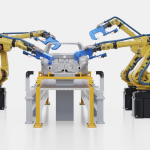As global sourcing becomes more volatile, leading procurement functions are shifting from static dashboards to live, cross-functional command centers. These digital nerve hubs combine supplier tier risk data, commodity pricing feeds, and logistics updates into a single decision layer, giving CPOs real-time control over procurement exposure.
Visibility That Reacts, Not Just Reports
Traditional procurement systems surface lagging indicators: a supplier’s late shipment, a missed compliance document, or a post-facto budget overrun. But when risk emerges in Tier 2, or commodity prices jump overnight, decision latency becomes a liability. Command centers change the tempo.
These platforms ingest structured and unstructured inputs, from trade advisories and FX movements to factory-level ESG alerts, and stream them into a unified risk layer. For instance, a Tier 2 wire harness supplier in Eastern Europe flagged in an NGO report can trigger downstream risk classification changes for multiple Tier 1 partners. Or a live price feed on cobalt or copper volatility can auto-adjust sourcing decisions for battery-grade components before PO commitment.
Rather than pinging procurement teams after the fact, these systems enable proactive routing: rerouting orders, escalating supplier health checks, or freezing non-critical buys based on real-time thresholds.
Reasserting Control Through Continuous Monitoring
Tiered Supply Chain Signal Capture: Use risk platforms to surface Tier 2 and Tier 3 events in real time. Connect trade databases, sanctions updates, weather feeds, and labor databases directly to the supplier master to flag risks even when procurement lacks direct contracts with affected vendors.
Live Cost Volatility Models: Layer commodity indices, logistics pricing, and tax rule changes into dynamic dashboards that project exposure across categories. When diesel surcharges or aluminum costs move, category teams see not just the rate—but the expected financial impact on active contracts.
Contractual Risk Tagging: Digitize and tag clauses for force majeure, penalty triggers, and payment terms across strategic contracts. When geopolitical risk shifts or FX thresholds are breached, alerts link to clauses at risk of activation, giving teams room to renegotiate or hedge.
Procurement–Finance Co-Monitoring: Enable shared oversight between finance and procurement on spend volatility. Command centers increasingly link with ERP and treasury systems to create a shared view of budget impact from inflation, demand swings, or supplier cost pass-throughs—closing the loop between forecast and exposure.
Scenario Modeling With Embedded Assumptions: Instead of relying on static plan-vs-actual snapshots, leading CPOs are using predictive models that simulate sourcing shifts under alternate demand, regulatory, or logistics stress. These models factor in working capital, service risk, and tax outcomes, helping teams justify cost buffers or multi-supplier hedging.
From Passive Risk Registers to Active Control Towers
The idea of a procurement command center isn’t about building dashboards—it’s about changing how decisions are made. In a world of rolling disruptions, the cost of delayed visibility is no longer acceptable. Procurement teams must stop treating risk as a monthly KPI and start operating as if exposure changes by the hour—because it does.
Companies that treat risk data as a live signal, not a quarterly review, are building a new model of sourcing agility. And as real-time orchestration becomes table stakes, CPOs will be judged not by the contracts they signed, but by the volatility they managed before it reached the balance sheet.





